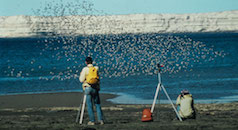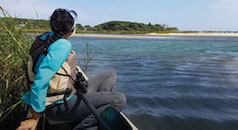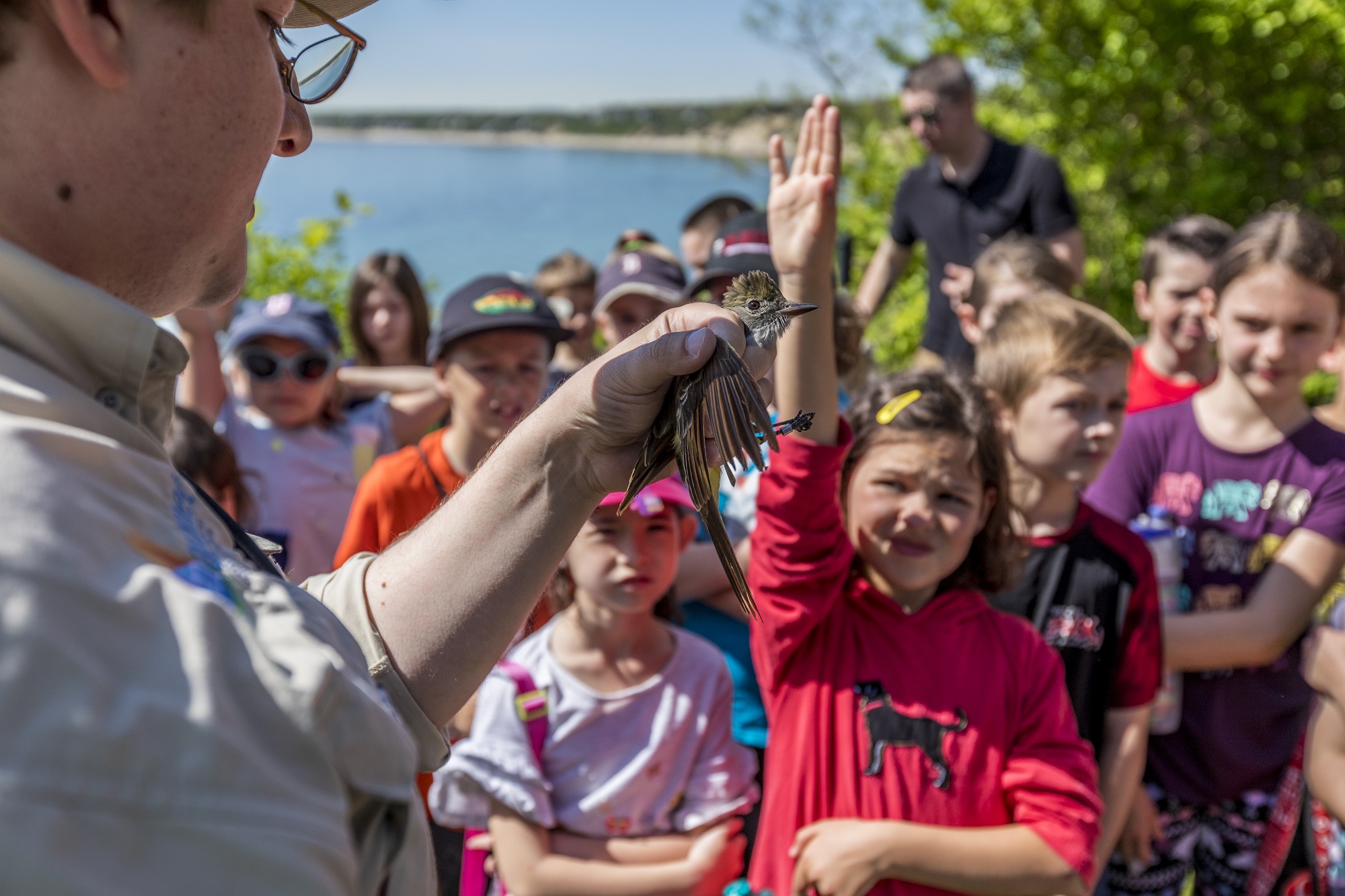Manomet’s Shorebird Recovery Project Director Charles Duncan traveled to the Bay of Fundy last month to celebrate the site’s 25th anniversary as part of the Western Hemisphere Shorebird Reserve Network. This site is critically important to Semipalmated Sandpipers.
“The fate of this one species hinges on what happens here,” Duncan said in an interview with Canadian radio station CBC-New Brunswick. “Three-quarters of the world’s population of Semipalmated Sandpipers will pass through between mid-July and the end of August. If something were to happen here, it would be over globally for the species.”
Duncan also serves as Director of the WHSRN Executive Office.
A celebration was held near Shepody Bay in New Brunswick, Canada, in honor of the WHSRN anniversary and of The Nature Conservancy of Canada’s 50th anniversary.
Seventy-five supporters of WHSRN and The Nature Conservancy gathered at the Interpretive Center at John’s Mills, New Brunswick, to celebrate the importance of the site itself and the progress of the organization’s shorebird conservation efforts. The Bay of Fundy was Canada’s first WHSRN site and the second in the network, after Delaware Bay.
Charles Duncan drove 500 miles to participate in the celebration, excited to return to the site for the first time in 14 years. He spoke of the continuing importance of the site, particularly for Semipalmated Sandpipers.
In the radio interview, Duncan said the population of Semipalmated Sandpipers has been in serious decline over the past 30 years. The current population is only about 20 percent of what it once was at the Bay of Fundy, a trend also observed in the populations of several other shorebird species.
In the fall, Semipalmated Sandpipers come by the tens to hundreds of thousands to stop at the Bay of Fundy where they double their weight before continuing on their migrations to the northern coast of South America.
“Birds become an easy and powerful way of talking about the importance of conserving these critical wetlands and coastlines of our hemisphere,” Duncan said. “They are symbols and ways of explaining the importance of those places.”
– Haley Jordan





 Back to all
Back to all